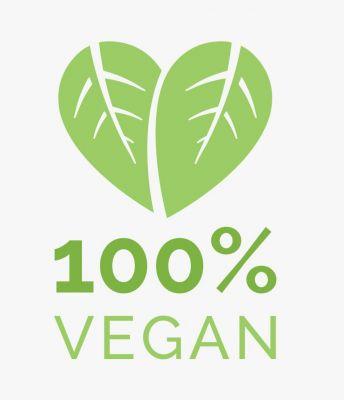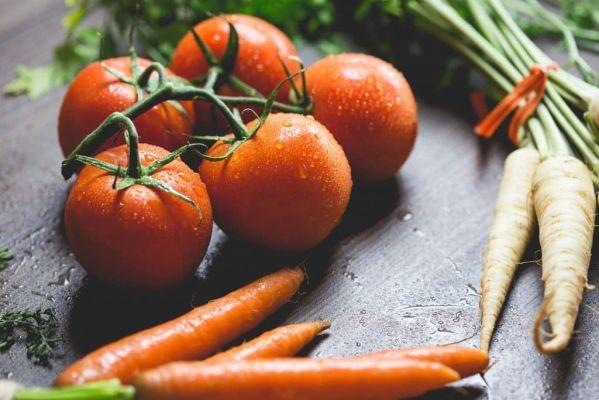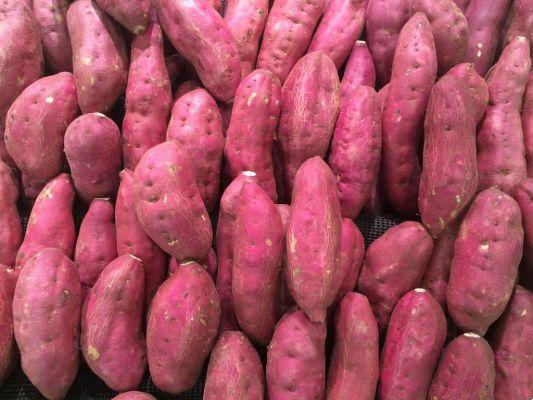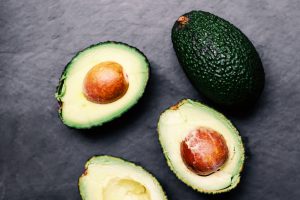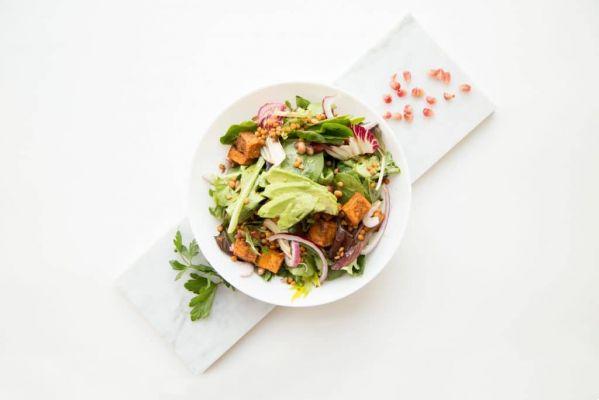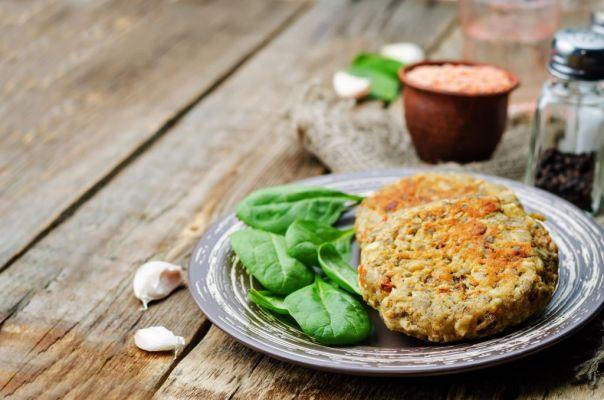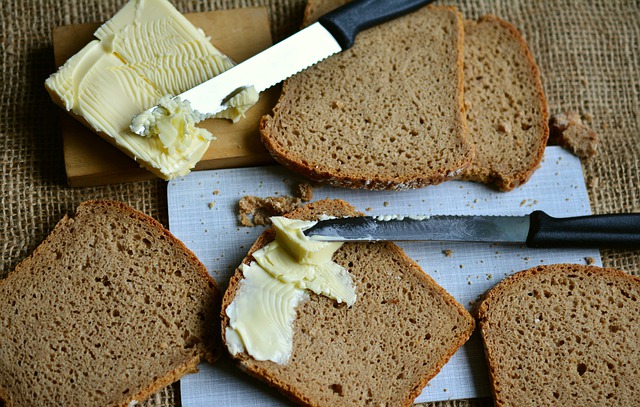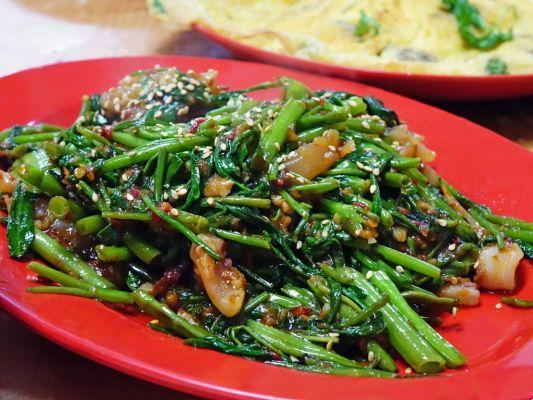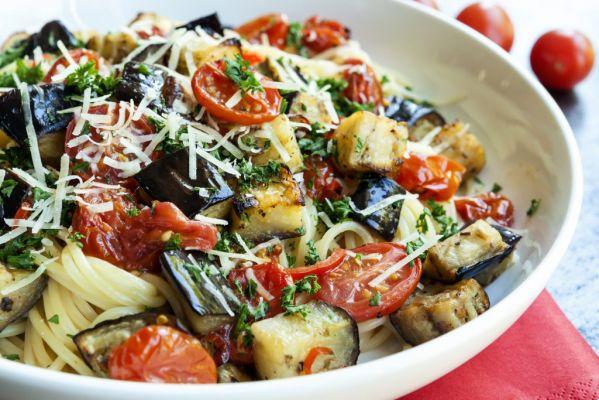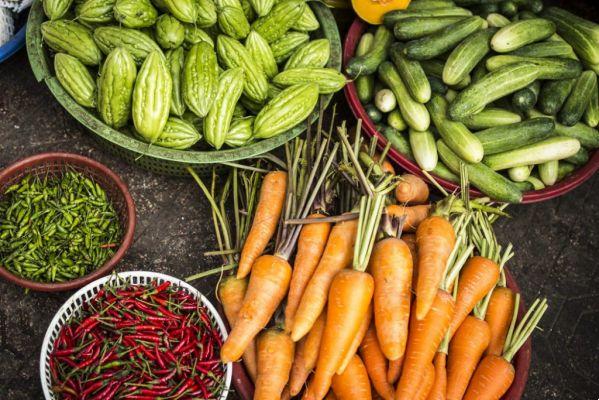Raw food, also known as live eating, is a vegetarian diet and is based on eating raw foods.
It is highly detoxifying and revitalizing, as the nutrients in food are preserved. The heat we use to cook destroys the properties of the food, so eating them raw (or cooking them at a maximum of 42ºC) makes them healthier, with more fiber, richer for our body.
Raw food is varied and rich in fruits and vegetables. At the end of this article we will show you some recipes for raw food. It is worth remembering that it is recommended to people who would like to adhere to this type of diet, that it is very important to try raw food before you decide to eliminate cooked food. The taste will not always be pleasant, especially for people who are not used to it.
What foods are essential in the life of a person who follows this lifestyle? organic food, in a general panorama, they are essential in raw food.
The main fruits for those who follow the diet are lemon, apple, orange, avocado, banana and green coconut. Vegetables are cabbage, spinach, lettuce, cucumber, celery, zucchini, onion, tomato and peppers.
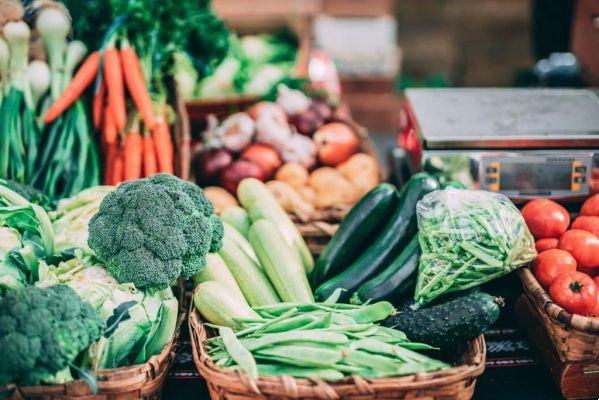
Oilseeds are also widely consumed in the diet, such as walnuts, Brazil nuts, almonds, macadamia nuts, pumpkin seeds, sunflowers, flaxseeds and chia seeds. It is important to say that the recommended thing is to soak for four hours and then dehydrate for another eight hours, in order to eliminate fungi and anti-nutritional factors.
To season, you can use olive oil, linseed oil, coconut oil, sesame oil, pink Himalayan salt, apple cider vinegar, soy sauce, curry, turmeric, turmeric, ginger, pepper, garlic powder, nutmeg and dried ginger. To sweeten, use agave or stevia.
Another point to be taken into account by those interested in live food are household items, such as a high power blender, food processor, fabric strainers, chef's knife, dehydrator, etc.
It is important to emphasize that the diet should be as varied as possible. Raw food eaters tend to consume larger amounts of food and should make the most of what nature offers.
In addition to making us healthier, this type of diet can also make us discover new flavors.
What is raw food?
Raw food (or “live eating”) is a food habit based on raw foods of plant origin. This means that those who are adept at raw food do not cook their food or even change its original chemical form, because studies prove that cooking food causes them to lose important nutrients for the body.
So a raw person (who is automatically vegan/vegetarian, for not consuming products of animal origin) composes their menus with fruits, vegetables, seeds, legumes and the like.
Why be raw?
Allied to a vegetarian/vegan philosophy of life, since raw eaters do not consume products of animal origin, being raw food is being in favor of a diet closer to nature and also healthier, as it helps in the prevention of diseases, such as cancer. and cardiovascular problems.

“Because it is a natural food and without additives, raw food ends up reducing the rate of cancer as well. In the case of the heart, the benefit lies in the absence of the types of fat that are harmful”, explains Ludmila Novaes, nutritionist at the Instituto do Coração (InCor) in São Paulo.
How to start or raw food?
The best thing to do for those who want to join raw food is that it be done little by little, gradually, not in a radical way. Changing the diet from one day to the next and suddenly cutting the menu to raw foods can bring many problems for the aspiring raw-eater, both in the physical and psychological health of the person.
To accustom your taste buds, the ideal is to gradually experiment with raw vegetables, trying to create dishes and combinations of these foods according to your taste. You should also include green juices, vitamins, fruits and nuts in your daily life, getting used to having meals closer together, like every 3 hours. In short, the most important thing is to respect your own time and processes, understanding your limits and your body, without pressure.
Myths and truths about raw food
As the raw food diet is not widely known, there are many false facts and misinformation surrounding this subject, which can generate prejudice and end up driving people away from this eating habit. That's why it's important to unravel every raw food myth and truth to understand it once and for all. Check it out below.
"Raw food helps detoxify the body." Truth!
As cooking causes food to lose its enzymes, when used to a raw diet, a raw food person's body absorbs good substances and nutrients more quickly, facilitating the detoxification of the body.
"Raw eaters are constantly hungry." Myth!
In fact, with raw eaters, the opposite happens: because they consume much more nutrients and come from a more varied diet, they feel satisfied for much longer. Furthermore, the feeling of satiety is not exactly a determinant of the feeling of hunger; what happens is that, in the culture of consuming red meat every day, people have gotten used to feeling constantly stuffed, which is not healthy at all.
"Eating only raw foods causes insufficiency of vitamins and nutrients." Truth!
Although raw food has many benefits regarding the absorption of nutrients and vitamins, it is very difficult to maintain a completely balanced diet that meets all the vitamin needs of an organism. That's why most raw eaters pay attention to this and often replace nutrients by taking vitamin B12. This does not mean, however, that the raw food habit alone is insufficient for health, after all, in any type of diet, one can be subject to a deficit in some nutritional part.
“In raw food, protein is lacking”. Myth!
Contrary to popular belief, when proteins are generally only associated with meat consumption, there are many and varied sources of protein in plant-based foods. Dark green leafy vegetables, legumes and seeds, for example, are protagonists in the absorption of this powerful nutrient.
The cons of raw food
Despite bringing more nutrients to the plate, the raw food diet requires extra care in relation to food hygiene, since raw vegetables contain many microorganisms that can cause serious infections.
In addition, those who choose this eating habit must constantly pay close attention to the amount of protein ingested, as well as the levels of iron and vitamins D and B12, which are nutrients that are difficult to obtain in entirely raw foods.
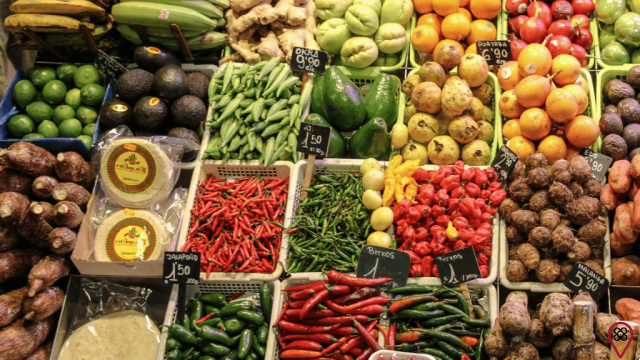
There is also a social and psychological issue around raw food consumption, which can harm the individual who chooses to follow this eating habit. This is because eating is an act present in many fraternizations and social gatherings, a custom that permeates various relationships and types of events.
A person, when becoming raw, stops going to places and goes out with friends or family for this type of activity, since they no longer eat the same way as others, that is, the rawivore starts to refuse invitations and isolate themselves. , which is not good for your mental health and socialization.
Do you know what is plant based?
A plant based diet is a diet based on plants and foods in their most natural form. Therefore, foods such as fruits, vegetables, legumes, vegetable oils and seeds such as walnuts and chestnuts, for example, are the protagonists of this eating habit.
A strong feature of plant based is the fact that it does not involve the consumption of products of animal origin, that is, it is a vegan diet.
Unlike what happens in raw food, however, plant-based supporters can choose whether their food will be cooked or not, not living only on raw vegetables.
Even though it has so many benefits, raw food is a difficult eating habit to achieve, because food is not just something we do out of physiological necessity, but it is involved in a cultural and social complex.
You may also like
- Flavored water: Discover this raw drink
- Understand how your relationship with food defines you
- Raw food: the raw food diet
- Discover 6 tricks to clean pesticides from fruits and vegetables
- Caring for the Allergic Christmas Dinner
Anyone interested in this diet and intending to become a raw foodie should do so carefully and with a lot of determination; otherwise, the person may be harmed during the process. Those who don't feel like it have the role of respecting any and all ways of life and getting informed about it so as not to spread lies and prejudices on the subject.
Delicious recipes with raw foods:
carrot couscous
Ingredients:
- Olive oil;
- 5 large carrots;
- Cassava flour;
- 1 bunch of green smell;
- 1 red pepper;
- 1 yellow pepper;
- 3 medium fresh tomatoes;
- 1 chili pepper;
Preparation:
Peel the carrots and grate. Place them in a colander and remove all the liquid. Chop the peppers, tomato, pepper and parsley. Place all the ingredients on a platter, including the oil, add the manioc flour until it has the consistency to put in molds.
Raw almond milk
Ingredients:
- A cup of almonds;
- 700 ml of filtered water.
Utensils:
- Voile strainer or sieve;
- Middle basin;
- Blender.
Preparation:
Soak the almonds in two cups of water for eight to 12 hours. Wash and drain well. Put them in the blender with the 700 ml of water and let it beat well. Pour over the colander or sieve to drain into the basin. Your almond milk is ready. A tip of consumption is to beat with banana, dates and cocoa or ingest pure.
Tip: With the almond residue retained in the sieve, it is possible to make a ricotta seasoned with oregano, sea salt or Himalayan salt and lemon.



